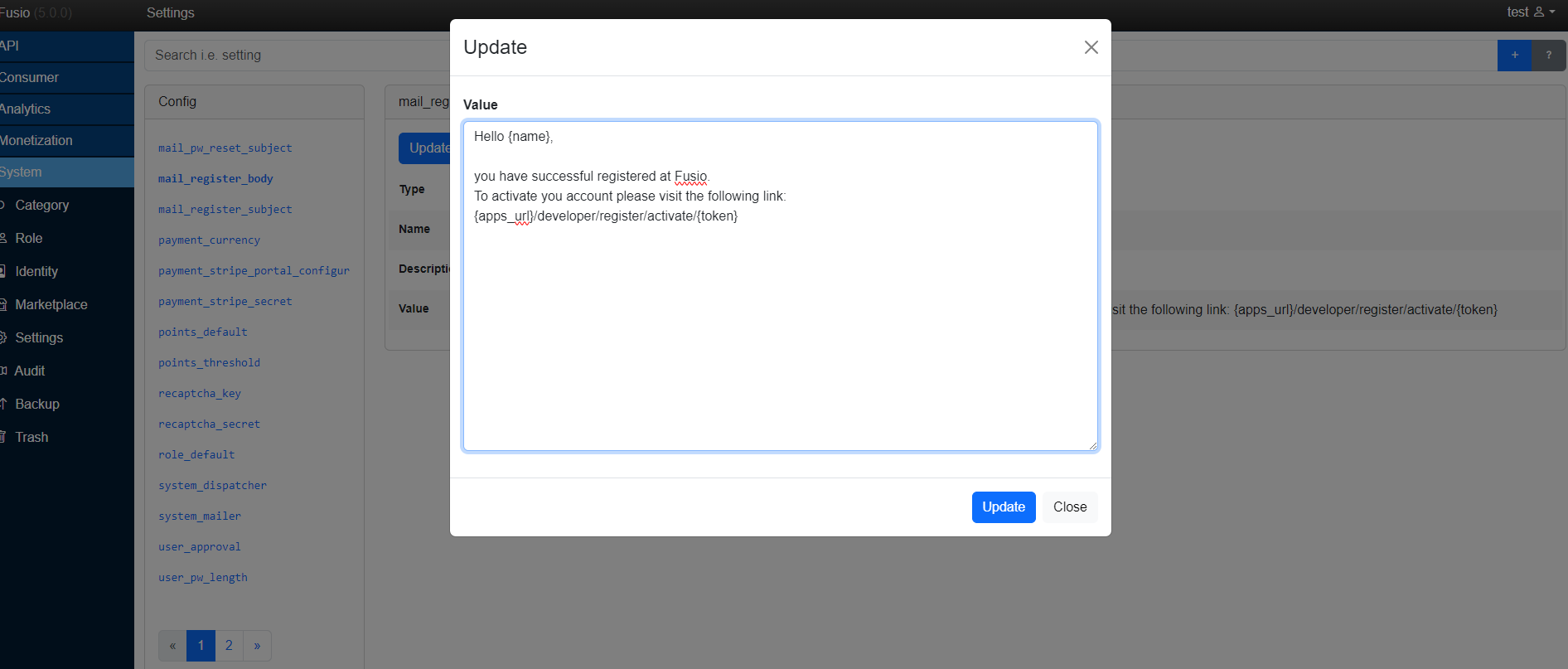Authentication
This document describes how you can integrate the Fusio login and registration into your app. While it is targeted at Single-Page-Applications running in a browser you could also integrate this into any kind of app.
Login
To implement a basic login you can use the /consumer/login endpoint where you only need to provide the username and password of the user and it returns an access token on success. This access token can then be stored and used for any call of your API.
OAuth2
Besides this Fusio provides at the /authorization/token a complete OAuth2 endpoint.
With the client_credentials grant it is also possible to login with the user credentials.
The endpoint also returns an access token which you can use for further requests.
Social-Login
At Fusio you can also configure OpenID connection identity provider i.e. if you have a self-hosted identity provider like Keycloak. In this case you need to configure at the backend this identity provider under System / Identity s.

Each identity provider is assigned to a specific app. To get all configured identity provider for a specific app you need to use the /consumer/identity endpoint. You can then render a login button for each identity provider. If a user clicks on this button your need to redirect the user to the provided redirect url.
Note it is important that you add a query parameter redirect_uri to the redirect so that
the user gets redirected to your app. If your provide no redirect Fusio will show the user
only the access token which can be used i.e. for desktop apps.
Callback
If the login was successful at the identity provider the user gets redirected to the configured
redirect_uri of your app. Fusio adds the following query parameters to the redirect_uri
which you can then use inside your app:
access_tokentoken_typeexpires_inrefresh_tokenscope
You can then store the access_token and use it for further requests. To get more
details about the user you can make a request to the /consumer/account
endpoint which returns more details about the authenticated user.
Refresh
Every access token is limited to a specific time frame, you can adjust this time frame at the Fusio configuration. It is possible to use the refresh token to obtain a new access token. Through this the user does not need authenticate again.
To refresh a token you can either send a PUT request to the /consumer/login
endpoint or you can also use OAuth2 /authorization/token endpoint which supports the refresh_token
grant.
Registration
To implement a basic user registration you can use the /consumer/register endpoint. There you only need to provide the name, email and password of the user and the user gets registered. In this stage the account is created but disabled. The user then needs to verify the email address. Fusio sends an email to the provided address containing a link to activate the account. This link and the email content can be customized at the Fusio settings s.

Activation
The activation link must point to an url of your app. If the user arrives at the
activation endpoint you need to get the token parameter and call the
/consumer/activate endpoint
providing the token. If everything is fine the account gets activated and the user
can login.
Password reset
If a user has lost his password it is possible to start a password recovery process. For this the user only needs to provide the email address and Fusio will send a password reset mail. To initiate a password reset you need to send a POST request to the /consumer/password_reset endpoint providing the email of the user. The password reset email can be also customized at the Fusio settings s.

The mail contains also a link to your app containing a token. If the user arrives at the confirmation endpoint a user can provide a new password and you need to send this new password with the token to the /consumer/password_reset endpoint. If everything is finde Fusio will change the password of the user.
Captcha
At the registration and password reset endpoint you can also provide a captcha value.
This is needed in case you have configured at the Fusio settings a ReCaptcha
key and secret.

If configured Fusio will require this captcha parameter. This can be useful if you want
to protect those open endpoints from abuse. Currently we only support the Google ReCaptcha
service as captcha provider but this can be also extended if there is a demand for other
solutions.